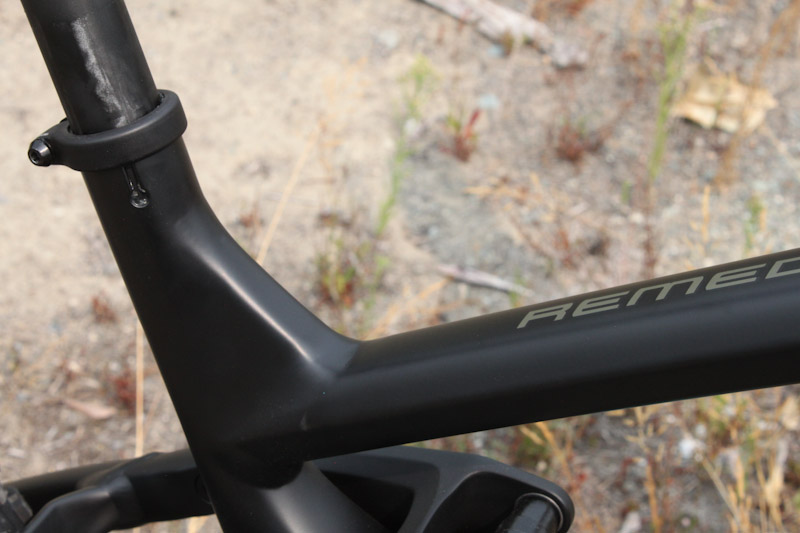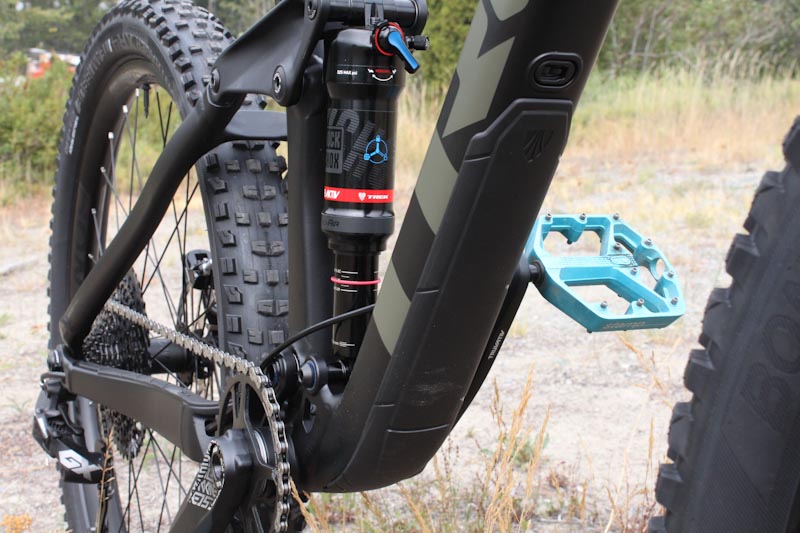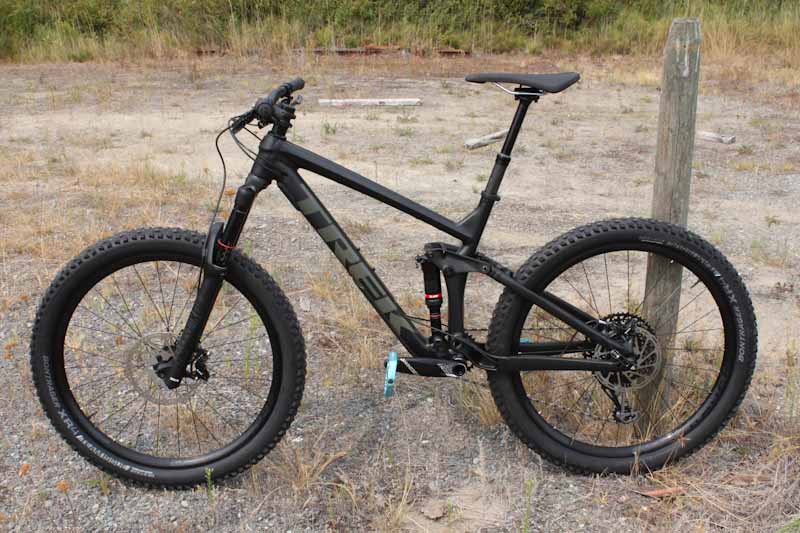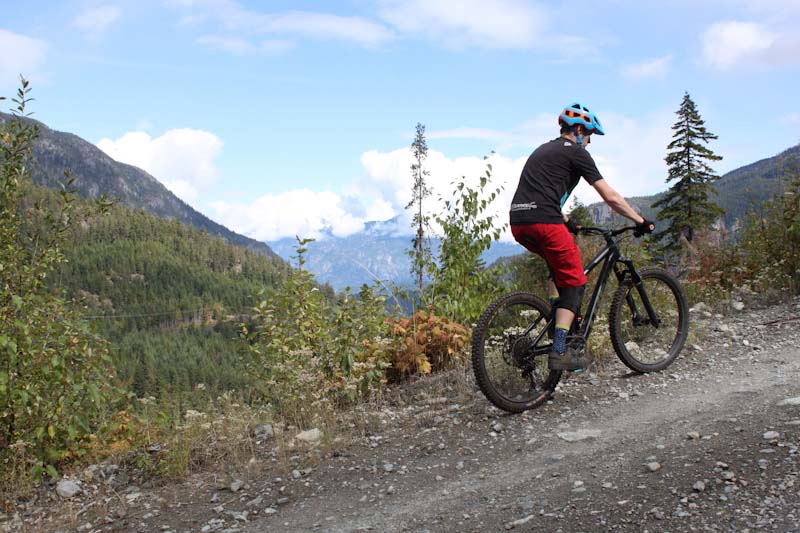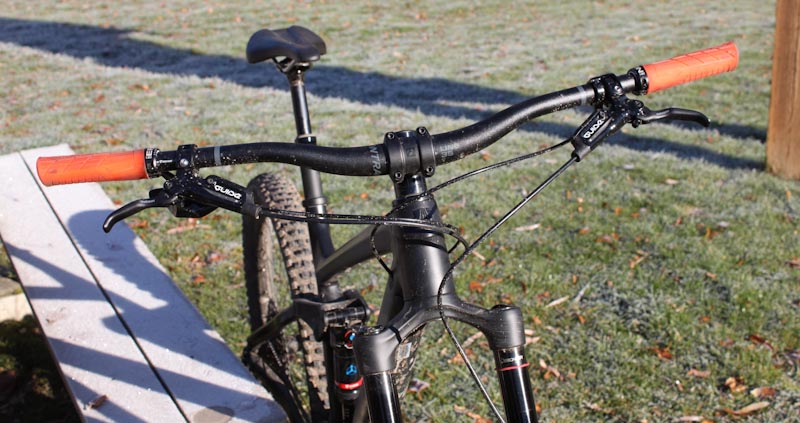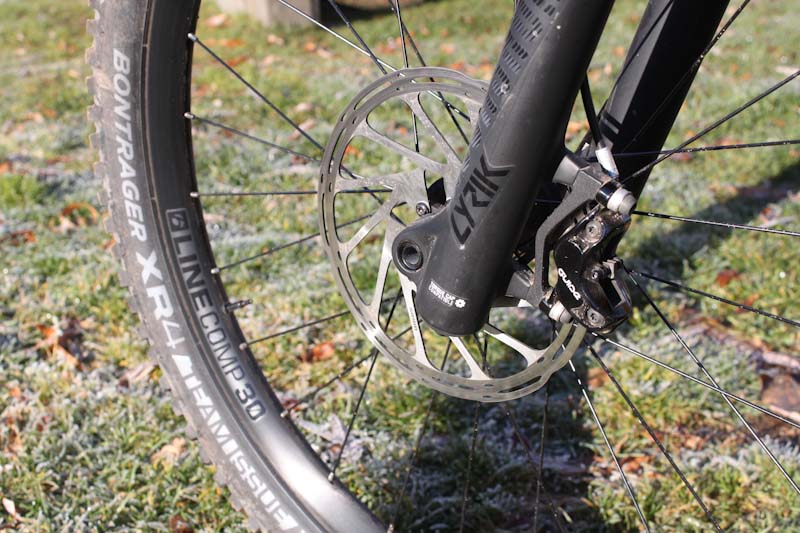Earlier this summer I spent an evening comparing a bunch of MTB brands’ entry-level trail bikes. A lot of these bikes sit a little over the $3000 USD mark, but at that price you won’t quite get a ‘total package’ bike. When I came across the Trek Remedy 8, I found what I was after – A build spec that didn’t cry out for upgrades.
Now the price tag on the Remedy 8 takes a step up from ‘entry-level’, but I thought those extra dollars were well accounted for. With a 12-speed Sram GX Eagle drivetrain and a Rockshox Lyric RC fork, this bike comes ready to rock. After testing the Remedy 8 for the last few months, I’d say my impressions held true – I don’t think you can spend much less on a bike that won’t leave you wanting.
If you’re in the market for a mid-spec bike that offers great value and uncompromised on-trail performance, Trek’s redesigned 2019 Remedy 8 is definitely a contender in this class.
What’s changed for 2019:
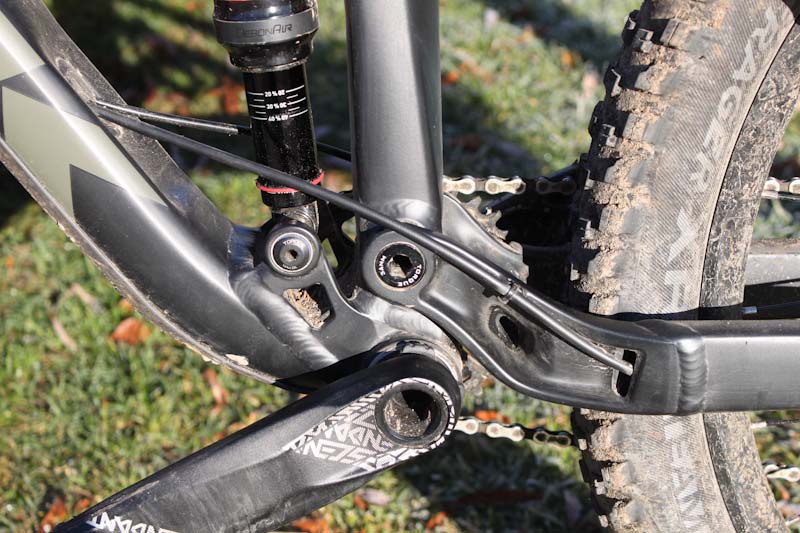 The big news is that Trek has redesigned the Remedy frames for 2019. Trek says they were pretty happy with the Remedy already, so the general character of the bike remains the same. However, the new frame has seen a few notable updates.
The big news is that Trek has redesigned the Remedy frames for 2019. Trek says they were pretty happy with the Remedy already, so the general character of the bike remains the same. However, the new frame has seen a few notable updates.
The most significant change is the new Remedy’s fixed lower shock mount. Trek decided to do away with their Full-Floating suspension design, as they’ve determined a fixed mount offers advantages with longer travel bikes. A solid mount helps increase frame stiffness, reduces weight, and allows for shorter chainstays. They also say since air shocks are getting better at small bump compliance (which the full-floating design aimed to enhance), fixing the shock mount doesn’t sacrifice on-trail performance.
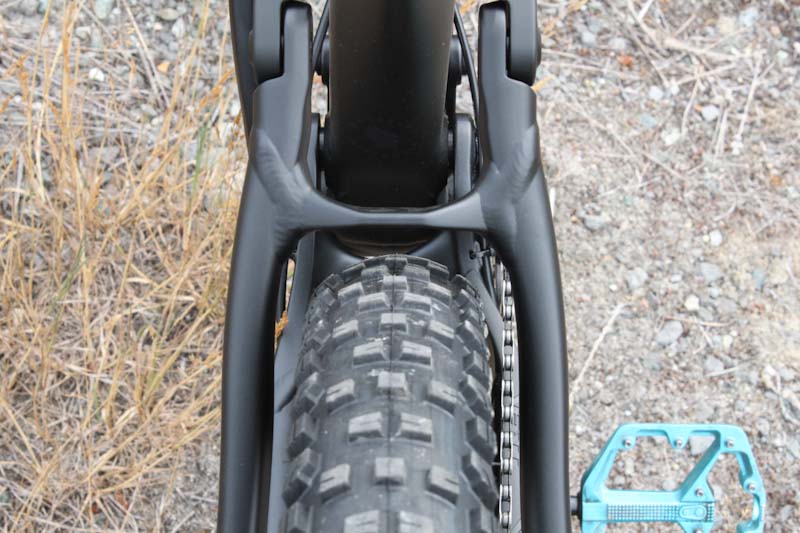
As for geometry, Trek didn’t make sweeping changes to the 2019 Remedy. The seat tube is now a bit steeper than before, and offers more insertion clearance to accommodate dropper posts. The new frame also provides more tire clearance, and can now run up to 27.5 x 2.8” treads.
The Remedy 8’s frame is built from Trek’s Alpha Platinum aluminum, and incorporates their beefy straight-shot down tube design and Knock Block headset. Between the shapely top tube, seat mast and the ground-out welds on the seat mast gusset, the frame could be mistaken for carbon at first glance. That is, until you notice the heavy-duty welds at all the other junctions.
The rear end provides 150mm of travel, which is controlled by a RE:activ tuned Rockshox Deluxe RT3 DebonAir rear shock. The Remedy includes Trek’s Mino Link flip chip, which alters the head tube angle by 0.5 degrees and the BB height by 7mm. I felt the bike’s lower/slacker mode was most suitable for my local trails, so I tested it in that setting for the majority of the time.
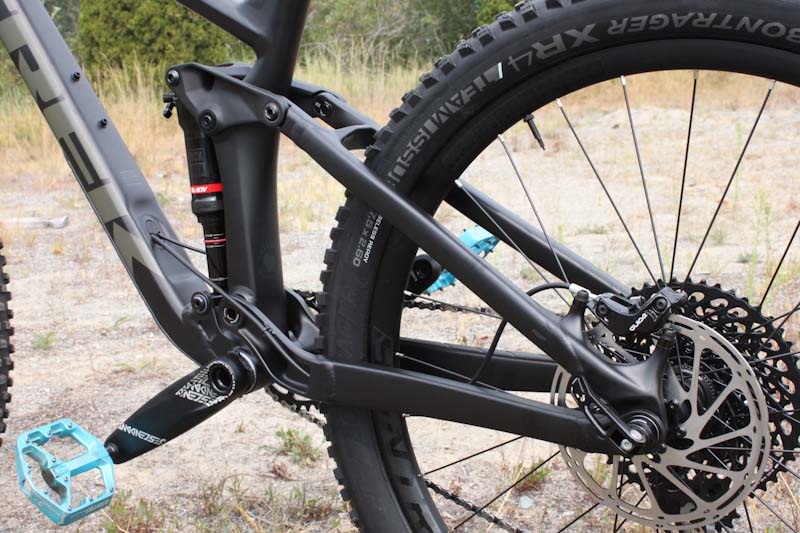 The Remedy’s rear axle is Boost 148mm, and its QR-style lever makes removing the wheel quick and tool-free. Trek’s Control Freak internal routing corrals all your cables, and other key frame details include a press-fit BB shell, an ISCG05 mount, a water bottle mount atop the down tube, and protective guards on the down tube and chainstay.
The Remedy’s rear axle is Boost 148mm, and its QR-style lever makes removing the wheel quick and tool-free. Trek’s Control Freak internal routing corrals all your cables, and other key frame details include a press-fit BB shell, an ISCG05 mount, a water bottle mount atop the down tube, and protective guards on the down tube and chainstay.
Ride Impressions:
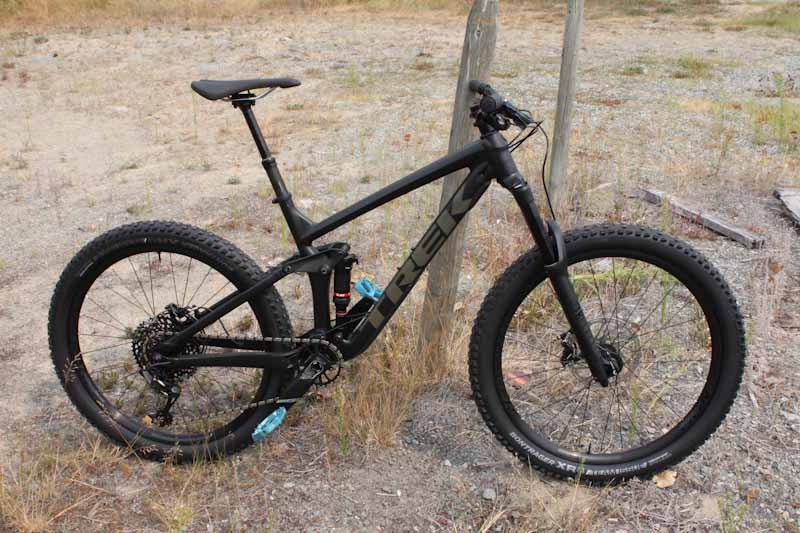 The Remedy’s geometry feels like a modern trail bike should. I rode the 18.5” frame, and its 604mm effective top tube and 435mm reach makes for a comfortably long front end that puts the rider in a centered position over the bike. I’m 5’9” tall, and I had no problem standing up over the front end to tackle steep climbs. Out back, the not-super-short 435mm chain stays still provide agile handling and make it easy to wheelie or pop the bike off bumps.
The Remedy’s geometry feels like a modern trail bike should. I rode the 18.5” frame, and its 604mm effective top tube and 435mm reach makes for a comfortably long front end that puts the rider in a centered position over the bike. I’m 5’9” tall, and I had no problem standing up over the front end to tackle steep climbs. Out back, the not-super-short 435mm chain stays still provide agile handling and make it easy to wheelie or pop the bike off bumps.
One thing that might sound odd at first is the Remedy’s seat tube angle of 68° degrees. However, it’s important to remember this is the figure for the actual seat tube angle. Since the seat mast has quite a kink in the middle, the effective seat tube angle is actually a much steeper 74.7/74.2° in High/Low positions. The seat doesn’t wind up too far behind the bottom bracket, and I was still sitting in an aggressive position for pushing the pedals.
The Remedy’s 65.5° steering angle wasn’t too slack for climbing, and gives the bike stable handling on fast downhill sections. The bottom bracket sits at 13.74″, which was high enough that I wasn’t smashing rocks with my pedals but still provides a low-feeling center of gravity.
Being a smaller guy, I like lightweight bikes. Even with its aluminum frame the Remedy 8 weighs in at 32lbs with pedals (which backs up Trek’s claim of 31lbs without).
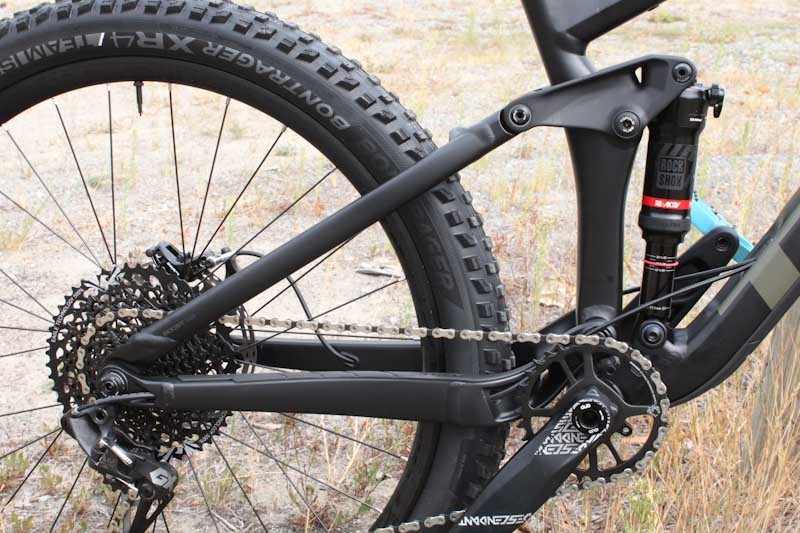 I’ll spoil it for you now – this bike is an excellent climber. The Remedy’s ABP (Active Braking Pivot) suspension platform provides a ton of pedalling support. Under hard, steady cranking it’s like the bike detects your input and says ‘OK, let’s go’! The linkage seems to inherently provide good efficiency, but playing with the shock modes makes quite a difference to the Remedy’s ride.
I’ll spoil it for you now – this bike is an excellent climber. The Remedy’s ABP (Active Braking Pivot) suspension platform provides a ton of pedalling support. Under hard, steady cranking it’s like the bike detects your input and says ‘OK, let’s go’! The linkage seems to inherently provide good efficiency, but playing with the shock modes makes quite a difference to the Remedy’s ride.
In its stiffest setting the Rockshox Deluxe RT3 rear shock is very firm. While it will use about half its travel when prompted, it typically rides high and stiff making for a firm ride on bumpy trails. In the stiffest setting I found the rear end would clunk when meeting larger rocks or roots, or when it hit the ground after bouncing over an obstacle. Small bump compliance was good, so I’d recommend using the stiffest mode for logging roads or smoother surfaces.
My local trail’s climbs are mostly singletrack (above photo aside!), so almost all my climbing was done in the middle setting. This mode definitely offers the best balance of pedal support and comfort. I didn’t lose much pedalling efficiency in this setting, but the shock handled bumps much better. Some big bumps can still feel a bit harsh in this mode, so I’d say the Remedy’s uphill ride isn’t as plush as other suspension designs I’ve ridden (FSR and four-bar particularly) but the pedalling efficiency is noticeably better. I found the Remedy also pedalled quite well under standing sprints, only giving up a bit of additional bob.
After reading all about Trek’s RE:activ shock tune, I wondered if these harder uphill impacts were a by-product of the shock’s regressive damping curve. Ideally the shock is supposed to isolate pedaling inputs by resisting compressions at lower speeds, but I wonder if some larger bumps were mimicking that low-speed compression and producing more resistance than desired. Ultimately it was only occasional impacts that produced this clunky feel, which is a small price to pay for the bike’s excellent pedalling abilities.
On really technical climbs leaving the shock wide open will provide great traction and comfort, but there is some loss of efficiency. The bike will give up a little bob and sag rearwards into its travel, so I’d stick with the shock’s middle setting for anything but the roughest trails.
 When it’s time to descend and you open up the rear shock, this bike goes from ‘business time’ to ‘party mode’! In its softest setting all of the shock’s big-hit hesitation immediately disappears, and the Remedy gobbles up bumps in an amazingly smooth fashion. The rear end seems to round off big hits so well that I could not slam the wheel into anything hard enough to produce a harsh impact!
When it’s time to descend and you open up the rear shock, this bike goes from ‘business time’ to ‘party mode’! In its softest setting all of the shock’s big-hit hesitation immediately disappears, and the Remedy gobbles up bumps in an amazingly smooth fashion. The rear end seems to round off big hits so well that I could not slam the wheel into anything hard enough to produce a harsh impact!
I also noticed the Remedy skips over chattery sections very well, and as claimed the ABP suspension remains highly active while braking. The wide-open shock willfully wallows into its travel, which leans the bike into a more aggressive downhill stance and makes it easy to get behind the saddle. While it softens trail inputs extremely well, the shock still provides enough mid-stroke support to pump you through rollers or berms, and resists bottoming out until you give it a good hard smack.
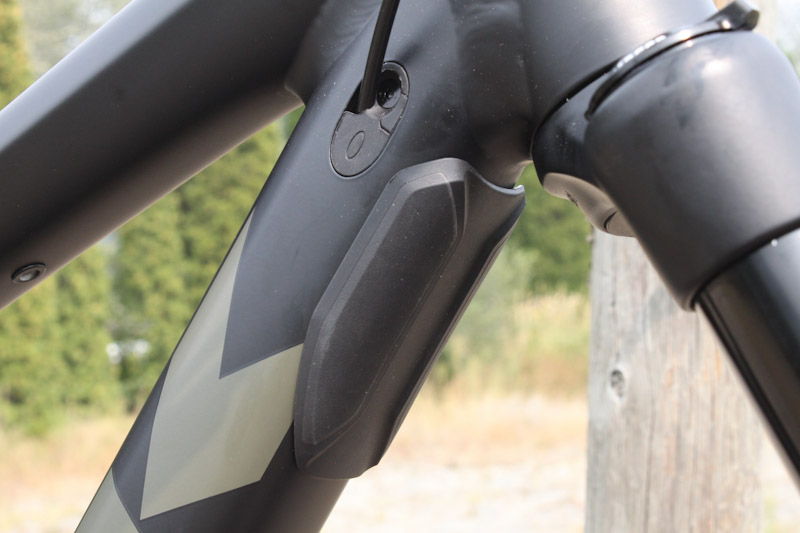
Another thing I noticed right away is the Remedy’s frame is very stiff. That big, straight down tube gives the bike carbon-like stiffness, which helps you plow straight and true through rough patches of trail. On the flipside, the well-rounded Remedy is still a snappy jumper that pops off roots and rocks easily.
Components:
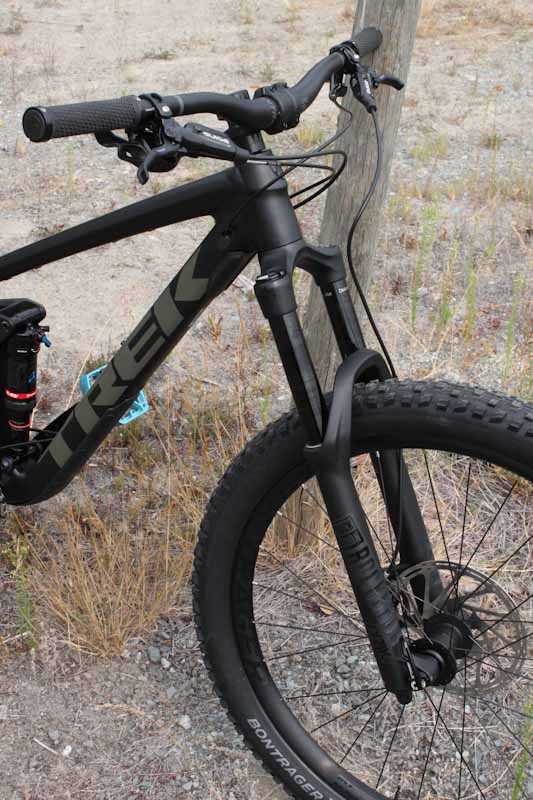 I mentioned earlier how impressed I was with the Remedy 8’s component spec, and after testing I’d say most people are going to be very satisfied with this bike in stock form. Up front, the 160mm Lyric RC DebonAir’s Charger 2 damper is an absolute dream. The fork is butter smooth throughout its travel, and its chassis is stiff. Plus the all black look is just rad.
I mentioned earlier how impressed I was with the Remedy 8’s component spec, and after testing I’d say most people are going to be very satisfied with this bike in stock form. Up front, the 160mm Lyric RC DebonAir’s Charger 2 damper is an absolute dream. The fork is butter smooth throughout its travel, and its chassis is stiff. Plus the all black look is just rad.
Sram’s GX Eagle drivetrain performed without fault for my entire test. I’m stoked that mid-range drivetrains are as good as they’ve become, offering pretty crisp shifting and perfect chain retention thus far. With a 10-50t cassette and a 32t front ring, gear range was never a problem.
There are some house-brand Bontrager parts on the Remedy 8 including the handlebars and stem, the saddle, the 125mm Line dropper post, the Line Comp 30 wheelset and the XR4 Team Issue 2.6” tires. The Line post never gave me any mechanical issues, and I found the 125mm drop was sufficient for a medium-sized rider like myself. The Arvada saddle wasn’t my favorite but was fairly comfortable, so I never swapped it out.
The wheels feature 29mm internal width rims to spread out the 2.6” tires nicely, and they’ve taken no notable damage during my testing. I noticed the Bontrager tires roll very smoothly and quite fast for a fairly luggy MTB tread. They provide pretty solid grip overall, but not quite as much as the Maxxis Minions I got to try on this bike too.
Despite the Sram Guide R brakes having four pistons and 200/180mm rotors to grab, I was surprised to find them not biting as strongly as expected on some high-speed trails. 90% of the time they were perfectly fine, but when the trail goes from ‘high speed straight’ to ‘180 degree corner’ you’ll have to give these levers a good squeeze. (Editor’s note: We’ve had varied performance out of the SRAM Guide brakes, but there are two things that have drastically improved any set with issues. First, make sure the compression nut at the lever is tight. We just had a set on a stock bike from the factory that were loose enough it was letting air in during the bleed. Second, once those compression nuts are tightened properly, give the brakes a proper full bleed.)
Trek’s 2019 Remedy 8 is a bike that I’d guess will either tempt a lot of buyers out of the entry level price range, or appeal to aluminum fans who are looking for a non-carbon bike with a solid component spec. I was very happy with the Remedy’s two-sided personality – It clenches its teeth when you’re cranking up the trail, yet devours big hits when it’s time to scream downhill. The Remedy 8 is available in Matte Trek Black or Miami Blue, and retails for $3999 USD.

